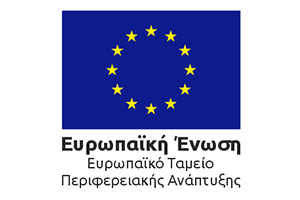Midea's
prominent position amongst the Mycenaean centres of the Argolid has been emphasized
by scholars of Mycenaean Civilisation; it is considered the third fortified Mycenaean
Acropolis after
Mycenae
and
Tiryns,
thanks chiefly to the rich finds from the neighbouring
cemetery of Dendra.
The
citadel
was built atop a
conical hill, which reaches 270 m.
above sea level and 170 m. above the surrounding area;
it dominates the eastern edge of the Argolid plain and is located about half way between Mycenae and Tiryns.
Excavations began in 1907 by the German Archaeological Institute
and were continued in 1939 by the Swedish archaeologist Axel Persson, who opened
a number of trenches on the lower terraces and brought to light a few architectural
remains on the summit of the hill. These he attributed to a palace. In 1963 the
Greek-Swedish collaboration began in Midea with a small trial excavation near
the East Gate. Excavations in the Acropolis were resumed in 1983 and have continued
since then systematically under the direction of Dr Katie Demakopoulou and Prof.
Paul Astroem. Dr. Ann-Louise Schallin, Assistant Director of the Swedish Institute
at Athens, succeeded Prof. Astroem in 2000. Mrs Nicoletta Divari-Valakou, Head
of the Archaeological Sites Department, Hellenic Ministry of Culture, participates
in the project. The finds from these recent excavations have verified Midea's
importance.
The fortification wall encloses an area of about 24.000 sq.m. protecting the upper
Acropolis and the lower terraces. The southwest slope is precipitous enough to
have remained unfortified. The two gates of the citadel are opposite to each other
on the east and west sides of the fortification.
During the recent excavations, areas near the East Gate and the lower terraces of the Acropolis were investigated.
The ascent inside the East Gate, a simple opening in the fortification wall, was
cleared of debris. A second inner gate was formed by a passageway between a cyclopean
wall and the fortification. Several rooms were excavated in this area and, on
the lower terraces, an important building, which was destroyed by a great fire,
and most probably by an earthquake at the end of the 13th century B.C., just as
at Tiryns. The skeleton of a young girl, whose skull and backbone were smashed
under fallen stones in a room in the East Gate area, seems to belong to an earthquake
victim. The West Gate of the Acropolis was fully uncovered during the recent excavations.
The Gate lies between the end of the south-west part of the fortification wall,
which at this point was extended to form a bastion, and a bulky retaining wall
covering the cliff. A guard room, opened within the wall, was protected by the bastion. In the area
inside the West Gate excavations brought to light a complex of rooms, built on successive terraces parallel to the fortification
wall.
The finds, such as storage vessels, millstones, whetstones, stone and lead vessels, stone, bronze and
bone tools, raw materials and a steatite mould for casting beads, show that most of the rooms were storerooms and workshops.
The West Gate and the bastion, as well as other buildings in the West Gate area inside the Acropolis,
were destroyed by a large conflagration, which was probably
caused by an earthquake, which struck Midea at the end of the 13th cent. BC.
A large amount of coarse household and fine decorated pottery was found in the Acropolis dated to Late
Helladic III B2 (second half of the 13th century BC). Pictorial pottery was also found, similar to that from the other major Argive centres,
such as Mycenae, Tiryns and Berbati. Other important finds include jewellery, sealstones,
a fragment of a unique triton shell model of amethyst, fresco fragments, terracotta
roof tiles and numerous clay figurines. Most important is a large wheel-made terracotta figure of a goddess,
similar to the large wheelmade figures found in the shrines of Mycenae, Tiryns
and Phylakopi on Melos. Of special interest are four clay sealings with Linear
B inscriptions and three storage stirrup jars also with Linear B inscriptions,
found in the lower terraces and in the West Gate area.
The investigation of the complex of rooms in the West Gate area was
completed with the excavations in 1996-2000. It is a large building complex with
two wings separated by a central corridor with a built drain running through it.
The best-preserved rooms, which will have been basement rooms, are those built
against the fortification wall. Their walls are well preserved and were covered
with painted plaster, as is shown by the fresco fragments found in the rooms.
Other finds include abundant Late Helladic IIIB2 pottery and stone tripod mortars.
The numerous tools and pieces of ochre, fluorite and mother-of-pearl strongly
suggest the existence of workshops for the making of jewellery and other objects.
On a terrace of the south-west slope parts of other rooms were uncovered,
also destroyed by the earthquake and the conflagration at the end of the 13th
cent. BC. Under these architectural remains an earlier phase of habitation was
identified, which is dated to the 15th cent. BC according to the pottery.
The results of the recent excavations, especially the Linear B inscriptions
and the sealings, show that Midea was an administrative centre, like Mycenae and
Tiryns. Other similarities between Midea and the two great Argive citadels are
the quality and the kind of the finds, which demonstrate important artistic and
craft production, close relations with other centres of the Argolid and the Aegean,
as well as the existence of cult areas, suggested by the large wheelmade terracotta
figure.
Text : K. Demakopoulou
N. Divari-Valakou


